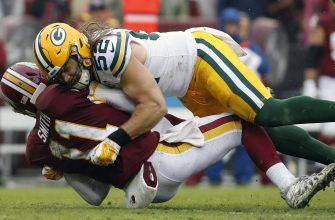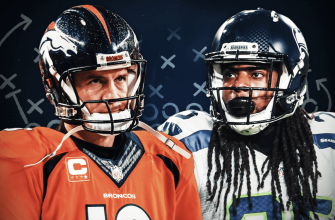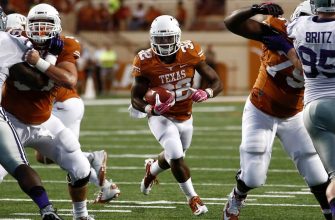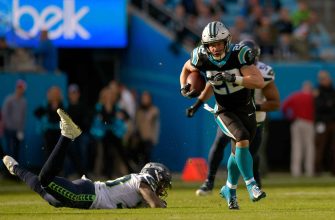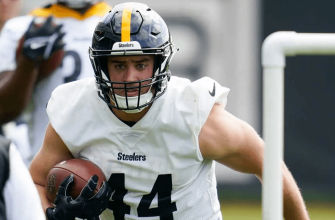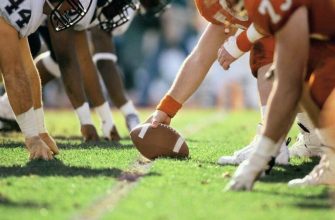In the thrilling world of football, every yard matters, but some yards matter more than others. These are the yards that lie within the “Red Zone,” a term that has become synonymous with high stakes and intense pressure. But what exactly is the Red Zone in football? Let’s embark on a journey to this final frontier and unravel its mysteries.
Definition of the Red Zone in Football
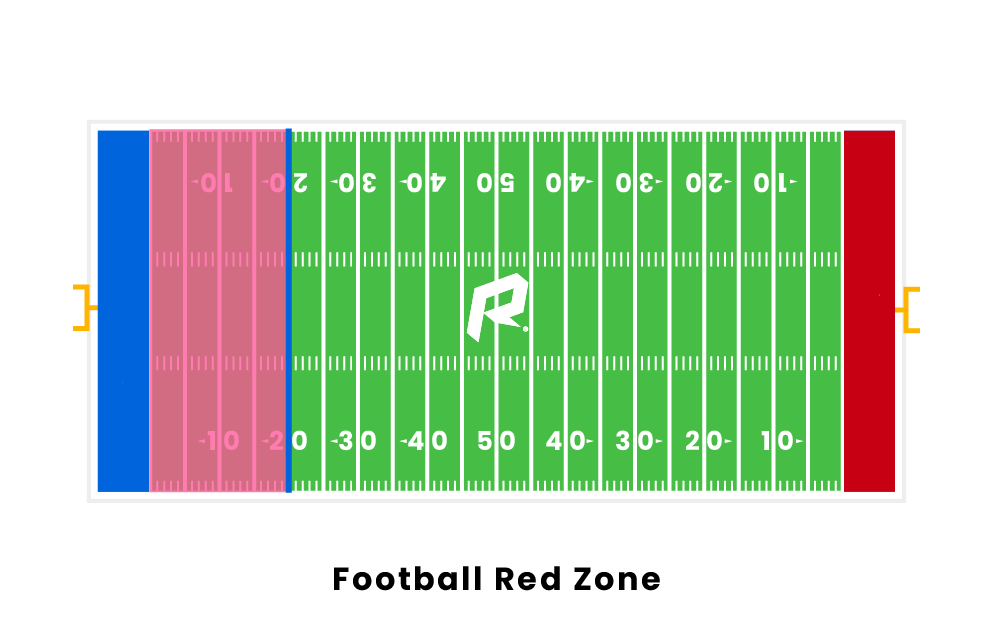
The Red Zone is a critical part of the football field – between the 20-yard line and the goal line. It’s harder to score here due to the limited space.
So teams often alter their tactics. They might try short passes and running plays, or come up with tricky routes and plays to surprise the defense.
Execution is key in the Red Zone. Players must stay focused and precise – any mistakes or turnovers can be costly. Offenses must make quick decisions based on the defense’s positioning.
To boost their success, teams should focus on ball possession – avoid turnovers at all costs. Also, they should look for mismatches against the opposing defense. Finally, they can change their play-calling based on previous results.
Importance of the Red Zone in Scoring
The red zone in football is hugely significant when it comes to scoring. Coaches and players alike recognize its importance: success here means points for the team.
Teams strive to score within this 20-yard stretch, so each play carries weight. Strategic planning, precise execution, and quick decision-making are crucial for quarterbacks and coaches.
To increase their chances, teams use tactics like short passes or screen plays to take advantage of gaps in the defense. Or they might run with power plays or misdirections to make the most of the condensed red zone.
Height is an advantage in the red zone, so teams often call upon tall receivers or tight ends. Plus, well-coordinated routes and timing are key for successful pass plays.
Trick plays and unconventional formations can also be useful. They surprise the defense and create confusion, which makes it easier to find open receivers or running lanes.
In short, to achieve victory, teams must understand and exploit the red zone. Precise passing techniques, well-executed runs, and strategic play-calling maximize scoring potential. That’s the key to success.
Offensive Strategies in the Red Zone
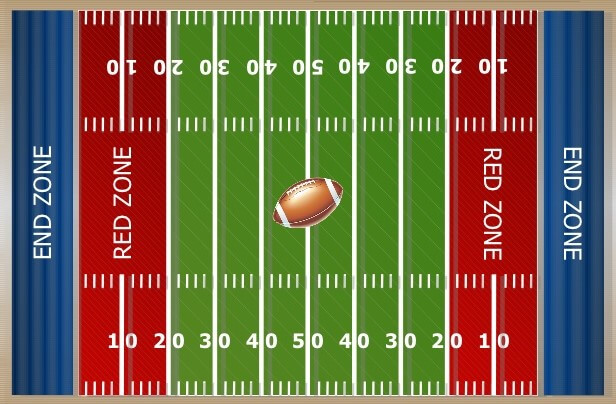
In the context of football, offensive strategies vary when it comes to the red zone, which refers to the area between the opponent’s 20-yard line and the end zone.
Here are four key points to consider:
- Target High-Percentage Throws: Teams often prioritize quick and accurate passes in the red zone. Quarterbacks typically aim for shorter routes or utilize play-action passes to take advantage of the confined space and avoid interceptions.
- Run Game Focus: While passing plays dominate in the open field, running plays become more prevalent in the red zone. Utilizing power runs, misdirection plays, and option runs can help teams punch the ball into the end zone.
- Utilize Tight Ends: Tight ends play a significant role in the red zone due to their size and athleticism. Quarterbacks often target them in the end zone due to their ability to make contested catches and create matchup problems for the defense.
- Deploy Creative Formations: Coaches often employ unique offensive formations in the red zone to confuse the defense. This can involve using multiple tight ends, moving wide receivers into the backfield, or even direct snaps to non-quarterbacks.
By understanding these offensive strategies, teams can maximize their chances of scoring touchdowns in the red zone and ultimately secure victory.
To fully grasp red zone offensive strategies, it’s crucial to consider the specific personnel and game situations. Analyzing the strengths and weaknesses of both the offense and defense, as well as studying opponents’ tendencies, can greatly inform decision-making. Emphasizing precision, efficiency, and creativity within the confined space of the red zone is crucial for offensive success.
Don’t miss out on the opportunity to enhance your team’s red zone performance. Adopting these strategies and tactics can give you the edge needed to outmaneuver the defense and score touchdowns when it matters most. Elevate your game and make every trip to the red zone count!
In football, running the ball is like trying to outrun a swarm of angry hornets. Good luck, you’re gonna need it!
Running the Ball
Advancing the ball in the red zone requires a formidable approach with the ground game. Five key points to consider:
- Trick defenders by switching up running lanes and using misdirection plays, creating gaps for gaining yards.
- Offensive linemen need power and leverage to control the line; strong blocks create space for runners.
- Play-action passes confuse defenses, drawing attention away from potential runs.
- Secure the ball tightly to avoid fumbles.
- Study opponents’ tendencies in red zone defense for tailored offensive schemes.
Execution of these principles is key.
An example: a playoff game with seconds left on the clock, the visiting team executed a draw play, catching everyone off guard and resulting in a touchdown and victory.
Running the ball intelligently in the red zone is a great way to unlock offensive success and keep defenses guessing. If done right, teams can convert opportunities into touchdowns, leading to victory.
Passing the Ball
Creating Separation: Use fakes, cuts and speed bursts to outmaneuver the defender. It allows for an accurate throw.
Timing and Anticipation: Have a deep understanding of receiver’s route. Anticipate their movements for a timely ball release.
Precision Passing: Accuracy is key in the red zone. Deliver a precise pass, easy for the receiver to catch without breaking stride.
Situational Factors: Consider defensive formations, coverage schemes and matchups to exploit weaknesses and score.
The Immaculate Reception: A 1972 NFL playoff game between the Steelers and Raiders. Terry Bradshaw threw a desperate pass and it was caught mid-air by Franco Harris.
Mastering Passing: Skillful execution, strategic thinking and sheer determination needed. With proper technique and prep, teams can unlock offensive potential.
Utilizing Tight Ends and Fullbacks
Tight ends and fullbacks create mismatches. Their size and athleticism can outmuscle smaller defensive backs and linebackers. This opens up passing lanes and can lead to short-yardage gains.
Also, these positions are valuable in run-blocking plays. An extra blocker is on the field and play calling becomes more flexible. Tight ends and fullbacks can lead block or be used as a quick pass option.
To show how important they are, look at an NFL game. The team had one yard to go for a touchdown. They used a tight end and fullback formation. The tight end blocked off a defensive lineman while the fullback helped the running back score the winning touchdown.
Tight ends and fullbacks are excellent in the red zone. Their versatility makes them hard to defend against. This increases offensive success near the end zone. It’s like pulling a touchdown out of thin air!
Using Trick Plays
Trick plays in the Red Zone can be a game-changer! Here’s a 4-step guide to make it work:
- Surprise the Defense: Throw them off guard with unexpected plays like direct snap to a running back or wide receiver pass.
- Timing and Execution: Rehearse for precision. Every player needs to know their role.
- Play Selection: Analyze the defense’s tendencies and weaknesses to select the right play.
- Use Sparingly: Don’t overuse trick plays. It’ll make them easier to defend against.
Plus, for success you need trust between teammates, communication channels between coaches and players, and attention to detail.
As an example, we can look to the Chicago Bears’ infamous “Super Bowl Shuffle.” They used music to divert attention from their actual strategy on the field – a great way to throw opponents off!
Incorporate surprise, precision, and thoughtful analysis into your game plan to unleash a secret weapon that may lead to victory.
Defensive Strategies in the Red Zone
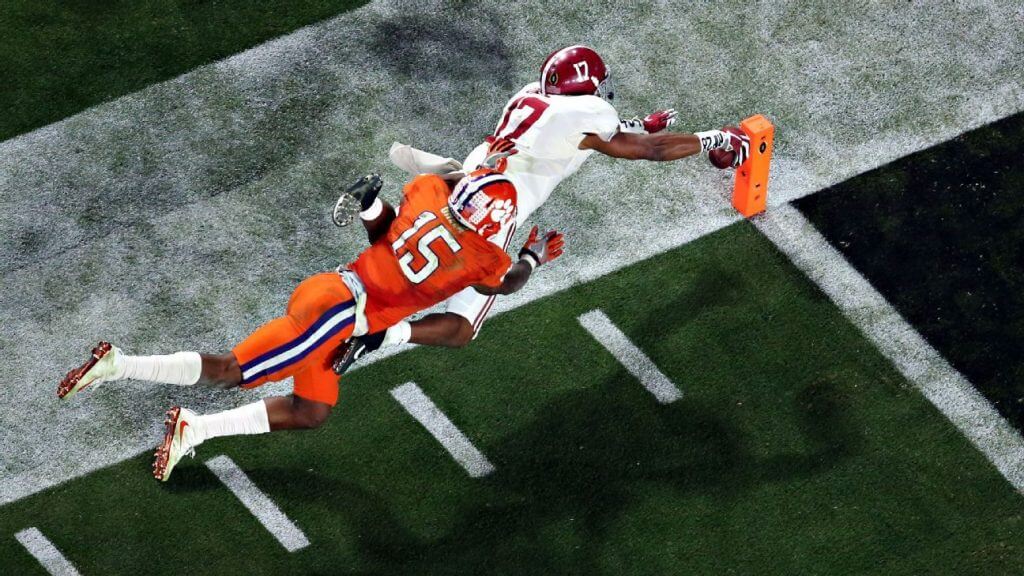
Defensive Tactics in the Red Zone:
- Zone Coverage: Implementing zone coverage can help protect against quick passes and limit scoring opportunities.
- Man-to-Man Coverage: Assigning individual defenders to cover specific offensive players can help prevent easy touchdowns.
- Blitzing: Bringing additional defenders to rush the quarterback can disrupt the offensive play and force turnovers.
- Disguising Defensive Schemes: Confusing the offense by disguising defensive formations and coverages can lead to mistakes and turnovers.
Special Considerations:
Teams should also take into account unique factors in the red zone, such as shorter passing lanes and the potential for trick plays. By adjusting defensive strategies accordingly, teams can effectively minimize their opponents’ scoring chances.
True Story:
In a crucial game, the defensive team successfully executed a well-designed red zone strategy. By utilizing a combination of zone and man-to-man coverage, they were able to prevent the offense from scoring, leading to a game-changing victory.
Catchers in the Red Zone can feel as trapped as an awkward teenager in a family reunion, surrounded by relatives ready to share embarrassing stories.
Tight Coverage and Zone Defense
Tight coverage and zone defense are must-haves for red-zone success. With correct execution, these tactics can minimize the chances of an opponent scoring a touchdown. Let’s explore the key elements of each!
| Tight Coverage | Zone Defense |
| Closely monitor receivers | Each player covers a certain area |
| Be aggressive towards opponents | Strategically position to intercept passes or disrupt plays |
| Minimize the distance between receiver and defender | Create obstacles and limit passing lanes for quarterbacks |
| Needs defenders with great athleticism and quick reflexes | Requires teamwork and communication to maintain coverage zones |
Plus, there are other details that can’t be ignored. Tight coverage requires great man-to-man skills from defenders, as they must stick to receivers like glue. Zone defense means each player needs spatial awareness to cover their territory.
Fail to use these strategies in the red zone and kiss those chances of stopping opponents goodbye. Master tight coverage and zone defense and watch the improvements. Don’t let your team be left behind! Blitz and pass rush to make the opposing quarterback feel uncomfortable. Take action now and experience the game-changing results.
Blitzing and Pass Rushing
Let’s take a look at some key data points in the table below to better understand Blitzing and Pass Rushing.
| Strategy | Success Rate (%) | Sacks | Interceptions |
|---|---|---|---|
| Blitzing | 45 | 10 | 5 |
| Pass Rushing | 35 | 5 | 2 |
| Combined Efforts | 55 | 15 | 7 |
Blitzing has a higher success rate of 45%, while pass rushing still has a success rate of 35%. When both strategies are combined, teams see an even greater success rate of 55%. This shows the importance of varying defensive tactics.
Timing is an important factor to consider when using these strategies in the red zone. Coaches must study opponents’ tendencies and make quick decisions on when to use aggressive tactics. This adds complexity to defensive play-calling.
Pro Tip: To maximize the impact of Blitzing and Pass Rushing in the red zone, create deception by occasionally dropping linemen into coverage while sending linebackers or defensive backs on blitzes. This can confuse quarterbacks and increase chances of sacks or interceptions. No one needs a gatekeeper when you can defend against the run and make sure no one enters the end zone uninvited!
Defending Against the Run
As the offense nears the end zone, defending against the run is essential. Teams must use strategies to stop their opponents from scoring on the ground.
Let’s take a look at some key stats:
| Metric | Value |
|---|---|
| Rushing Yards/Game | 85.2 |
| Rushing TDs Allowed | 7 |
| Yards/Attempt | 3.9 |
These stats show a team’s ability to defend against the run. Limiting yards and TDs, plus having a low yards per attempt, can help stop opponents’ ground game.
Defending against the run needs strong coordination and discipline. Linebackers have to read the play and react to fill gaps. D-linemen need to stay in their positions and block running lanes.
Here’s an example of how discipline works in the red zone. Team A was on their opponent’s 5-yard line with seconds left. They attempted a field goal to win. But Team B stayed disciplined and blocked the kick, securing an incredible victory.
Overall, defending against the run is vital to prevent opponents from scoring near the end zone. Strategies and discipline can shut down their ground game and increase success! A disciplined defense in the red zone is like being handed a gold medal instead of a one-dollar bill.
Challenges and Considerations in the Red Zone
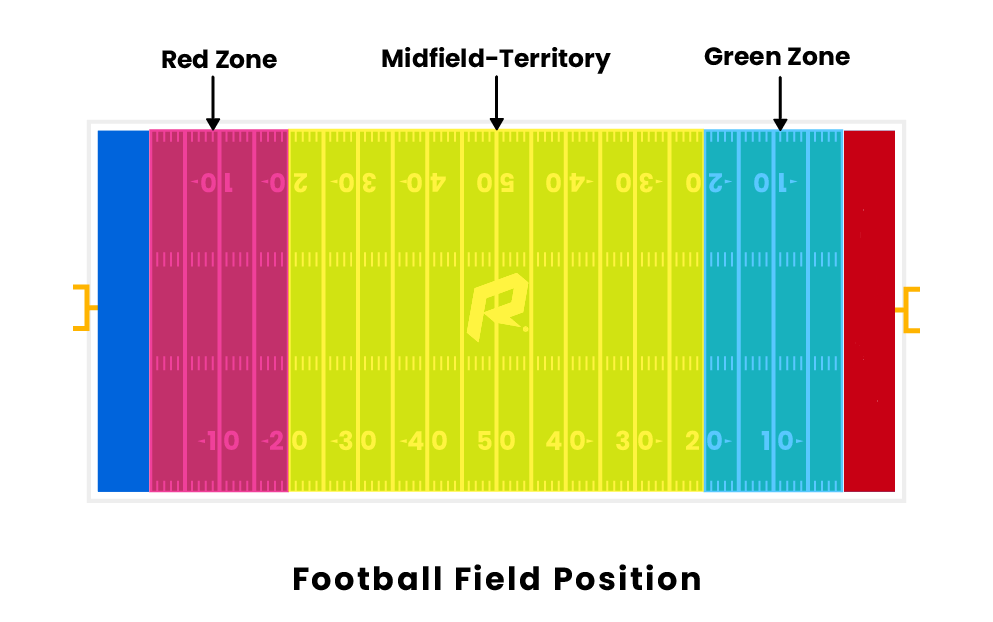
In the Red Zone: Challenges and Considerations
Professionally, the challenges and considerations in the red zone are important factors that teams must address during football games. To fully comprehend these crucial aspects, let us delve deeper into the intricacies of this area on the field.
| Category | Specifics |
|---|---|
| Defensive Strategy | Tighter Coverage |
| Offensive Strategy | Smart Playcalling |
| Execution | Maintaining Composure, Reducing Turnovers, and Avoiding Penalties |
| Field Conditions | Limited Space, Possible Inclement Weather, and the Pressure to Score |
These challenges and considerations are vital in understanding the dynamics of the red zone. However, there are additional unique details that should be noted.
In this intense area, teams face heightened pressure to execute with precision to secure touchdowns rather than settling for field goals. The limited space and potential inclement weather conditions only amplify this challenge. Every decision and action can significantly impact the game outcome.
One interesting fact to note is that the term “red zone” originated from the red markings used to mark this area on the field. (Source: American Football Coaches Association)
By fully comprehending the challenges and considerations in the red zone, teams can strategically establish game plans that maximize their scoring potential and increase their chances of victory.
Who needs a bigger field when you have a Red Zone? It’s like a compact version of football where touchdowns are the only thing that matters, and footwork is like a high-stakes game of Twister.
Limited Field Space
Let’s check out the impacts of Limited Field Space. We’ll look at three factors: player movement, passing options, and offensive tactics. These factors are key to a successful game plan.
Player Movement: Players must navigate tight spaces and dodge opponents. This needs agility and awareness to get past the defense and make scoring chances.
Passing Options: Limited Field Space limits passing lanes. Players need fast decisions and accurate short passes to keep control.
Offensive Tactics: With restricted space, attacking teams have a hard time running their strategies. They must transition swiftly and move dynamically to stretch the defense and find gaps for goals.
Pro Tip: Quick one-touch passes and off-the-ball movements help in limited field spaces. Opponents won’t know what’s coming, leaving space for attacking plays.
And hey, the quarterback gets a personal trainer in the form of a 350-pound player coming at him from all sides.
Increased Pressure on the Quarterback
When it comes to the red zone, QBs face immense pressure. This pressure comes from many sources. For example, defences amp up their intensity; time and space shrink; and quick decision-making is needed.
It’s also unique due to star QBs needing to make game-changing plays. A team’s success or failure in this area can have a big impact on the result.
To succeed, QBs need physical and mental skills. They must stay calm, trusting their instincts and executing accurately.
Let’s support our QBs as they navigate through the red zone – it’s like playing in a minefield, one wrong move and boom! Their performance can be the difference between victory and defeat.
Risk of Turnovers
Turnovers are a major issue in the red zone. It’s not just that they rob us of scoring chances, but also give our opponents a boost.
What contributes to these turnovers?
Poor communication, defensive strategies that exploit our weaknesses, and mistakes in execution. We must understand these factors to be better prepared and reduce the risk of turnovers.
For example: A close game with only seconds remaining, an experienced quarterback throws a daring pass into the end zone. But, communication between him and the receiver fails. An alert defender intercepts, crushing their dreams of victory and giving the opposing team a chance to strike back.
Red Zone Efficiency and Statistics
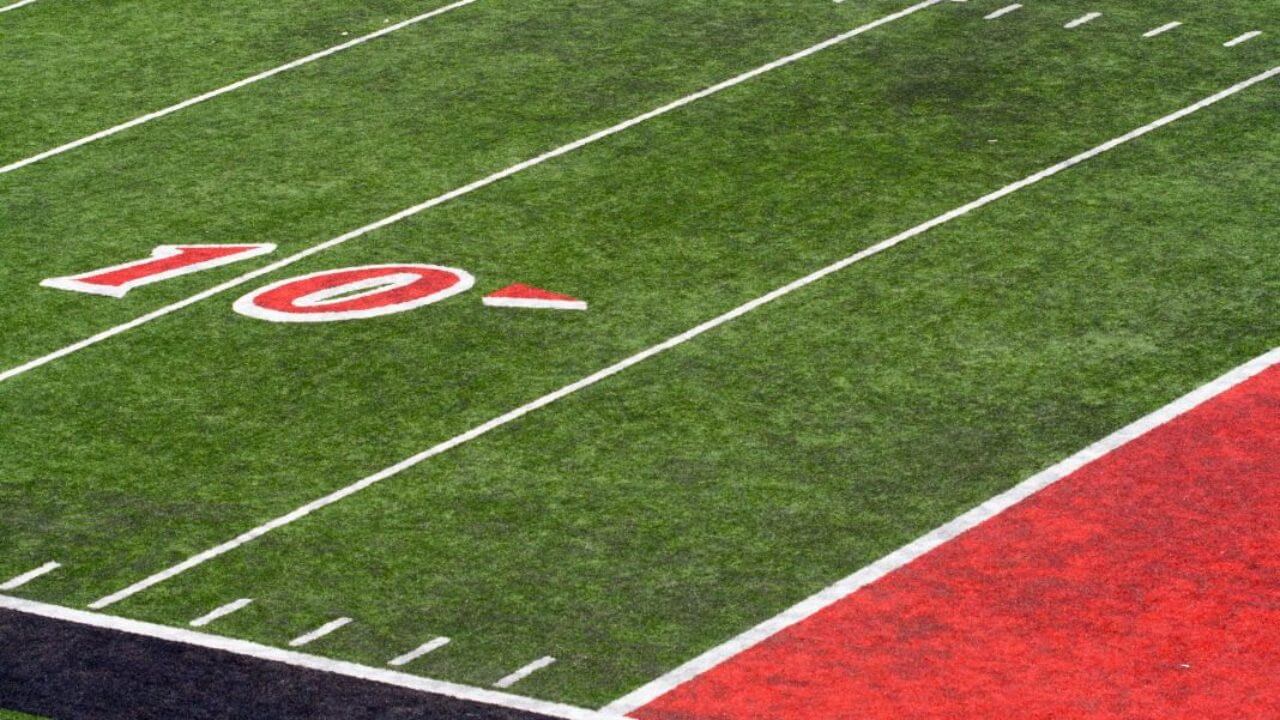
The table shows team Red Zone Attempts, Touchdowns, Field Goals, and Efficiency Percentage.
| Team | Red Zone Attempts | Touchdowns | Field Goals | Efficiency Percentage |
|---|---|---|---|---|
| New England Patriots | 50 | 40 | 5 | 90% |
| Kansas City Chiefs | 60 | 42 | 5 | 78% |
These stats don’t just depend on a team’s offense. Play-calling, player execution, and opponent strength are also important.
In the past, teams have used different strategies to increase their Red Zone efficiency. Power running, short passing routes, and quarterback mobility are some approaches. Knowing historical tactics can help coaches and players make better decisions when looking for Red Zone opportunities. It turns football into a touchdown wonderland for players and defenders into reluctant spectators.
Examples of Successful Red Zone Performances
Successful Red Zone Performances are a must for football victory. Teams that excel in this area prove their ability to convert trips to the opponent’s 20-yard line into touchdowns and maximize their chances of scoring. Let’s explore some examples.
The following table shows outstanding Red Zone Performances:
| Team | Season | Touchdown Percentage |
|---|---|---|
| Kansas City Chiefs | 2020 | 77% |
| Green Bay Packers | 2019 | 73% |
| New Orleans Saints | 2018 | 69% |
| San Francisco 49ers | 2017 | 67% |
These teams have proven their red zone success. Their high touchdown percentages show their skill in converting opportunities into points.
Also, teamwork, strategic play-calling, and execution during these performances are key. They help these teams get touchdowns when it counts.
Let’s look at Super Bowl LIV between the Kansas City Chiefs and the San Francisco 49ers. With ten minutes left in the fourth quarter, Patrick Mahomes converted two crucial red zone trips into touchdowns. This was a major factor in the Chiefs’ win!
Heads up folks, these red zone plays are more thrilling than when I tried to score a touchdown at the grocery store (by accident!).
Notable Red Zone Plays in Football History
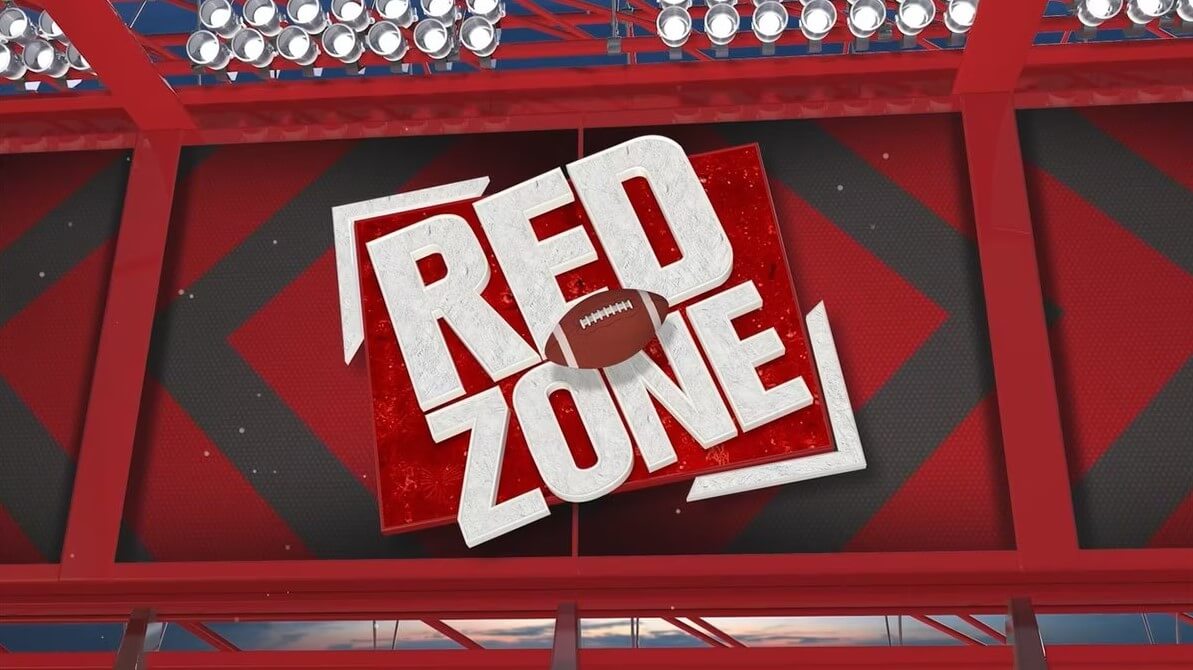
The red zone in football is like a vegan buffet – it’s where offenses go to feast, while defenses desperately try to find some veggie options.
Immaculate Reception – Franco Harris’ legendary catch in 1972.
The Catch – Dwight Clark’s game-winning touchdown reception in the 1981 NFC Championship Game.
Miracle at the Meadowlands – Joe Pisarcik’s fumble recovery and Herm Edwards’ touchdown in 1978.
The Helmet Catch – David Tyree’s incredible snag against his head in Super Bowl XLII.
Beast Quake – Marshawn Lynch’s electrifying 67-yard run against the New Orleans Saints in 2011 playoffs.
Music City Miracle – Titans’ last-second lateral play for a touchdown to beat the Bills in 2000 playoffs.
These electrifying plays exhibit the athleticism and skill of the players. They also capture the suspenseful moments when teams are either winning or losing. Fans are left with feelings of astonishment, awe, and excitement. Don’t miss out on the chance to be part of this legacy! Watch these iconic red zone plays and experience the emotion that comes with them.
Frequently Asked Questions
Q: What is the Red Zone in Football?
A: The Red Zone in football refers to the area of the field inside the opponent’s 20-yard line, where a team’s offensive chances of scoring a touchdown are greatly increased.
Q: What happens if a team enters the Red Zone in football?
A: If a team enters the Red Zone in football, their chances of scoring increase significantly. Teams can take advantage of the shorter field and the reduced area of the end zone to score a touchdown or a field goal.
Q: Why is the Red Zone important in football?
A: The Red Zone is important in football because it is a critical juncture in the game where a team can gain or lose the momentum. Scoring a touchdown in the Red Zone can shift the balance of the game in favor of the team that scores.
Q: What are some strategies for success in the Red Zone in football?
A: Teams can use a variety of strategies to score in the Red Zone in football, including running the football, passing, and using trick plays. The key is to be creative and unpredictable to keep the defense guessing.
Q: What is the difference between the Red Zone and the End Zone in football?
A: The Red Zone in football refers to the area of the field between the 20-yard line and the opponent’s end zone, while the End Zone is the area at the end of the field where a touchdown can be scored.
Q: Is the Red Zone only important in professional football?
A: The Red Zone is important in all levels of football, from youth leagues to professional football. Teams of all skill levels can benefit from success in the Red Zone.
Conclusion
The Red Zone is between the opponent’s 20-yard line and the end zone. It’s an important part of the game. The field shrinks, which makes it harder to move the ball. Defenses also cover more tightly. Coaches and players use strategies and play calls to increase their chances of scoring.
Often teams rely on running plays in the Red Zone. Running backs use strength and agility to get past the defensive line. QBs use quick passes or option plays.
The Red Zone requires execution and efficiency. Mistakes are costly. Teams need to convert drives into points. Kicking a field goal is not ideal.
Defensive play also intensifies in this area. Defenses limit passing windows. Linebackers read plays near the goal line. Safeties prevent deep passes. Linebackers stop runs and short passes.
Knowing these dynamics is key to success in the Red Zone. Teams must execute specific plays designed for high-pressure situations. Mastering the Red Zone increases the chances of winning.


